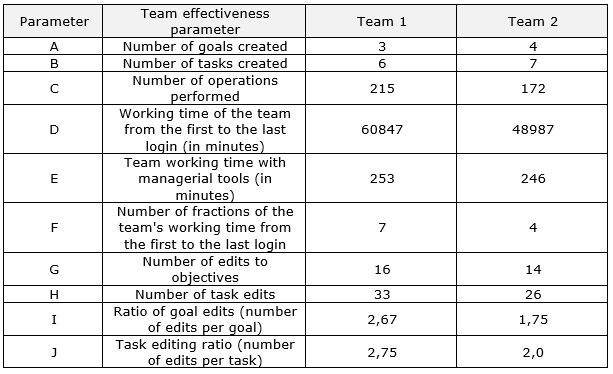I continue to present my research results on the work of a manager and the search for the answer to the most important question when we want to build a robot manager: what does a manager actually do? In the study described below, together with Dr. Kinga Hoffmann-Burdzinska, we looked at how people plan projects and whether they do it in a similar way. For simplicity’s sake, to make the similarities more apparent (or to make it obvious that there are none), we used only two managerial tools for setting goals and for defining tasks in the project plan.
The participants in the experiment were undergraduate management students from one of the private business schools. Their work was to plan the introduction of a new compensation system in an existing company. The students worked in groups of three or four, represented by a selected person using management tools. The purpose of the experiment was to see if the application of the Management by Objectives method, used together with the managerial tools Goaler and Tasker, would allow measuring the effectiveness of the team.
The organizational primary quantities – goal and task (see more: http://olafflak.home.pl/artificialmanagers/pl/uklad-wielkosci-organizacyjnych/) – became measures of team effectiveness in this project. A group of parameters describing the appearance as a function of time of each primary organizational magnitude n was chosen to evaluate team effectiveness.

Figure 1. Team efficiency parameters and results of the experiment using two teams as an example
From the data recorded during the experiment on the organizational size of the primaries, it could be concluded that team 2 worked more efficiently than team 1, because:
- worked for less time, both in terms of working time from the first to the last login (parameter D) and working time with managerial tools (parameter E),
- set more goals and tasks in less time (parameters A and B).
- had smaller values of editing coefficients for goals and tasks (parameters I and J), which indirectly indicated less effort in setting them.
It should be added that the above parameters do not indicate which plan was more feasible or would produce better results as a result of implementation. Neither the effect of plan implementation nor the content of the plan was analyzed. We only examined the effectiveness of the project planning process itself.
As you can see, same project, same planning conditions, same tools (Goaler and Tasker), and different results. Of course, this one example does not prejudge the fact that certain similarities in the behavior of managers do not exist. I wrote about it in this post:
However, the sequence of activities, their type and number tend to differ. How does this affect the automation of a manager’s work? I will write more about this in future posts.
You can find the entire article on the study conducted here:

